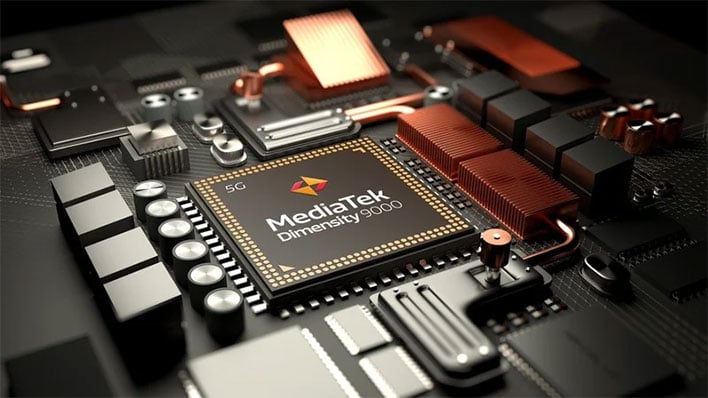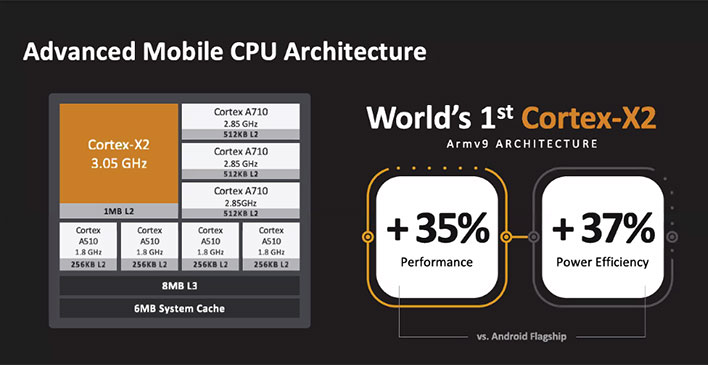MediaTek Dimensity 9000 4nm SoC To Battle Snapdragon For Android Flagship Phone Dominance

For years the go-to chipset for flagship Android phones has been Qualcomm's Snapdragon silicon. Even Samsung turns to Qualcomm's chips for its high-end Galaxy devices, reserving its own Exynos hardware for only certain territories. Well, that could all change with the introduction of MediaTek's Dimensity 9000, the first mobile chip to be built on a 4-nanometer manufacturing process.
While that in and of itself is noteworthy (TSMC's N4 offers 6 percent more density than N5), the real story here is the performance potential this chip wields and how it could shake up the mobile scene. It's not only taking aim at flagship dominance among rivals that compete in the Android space, but might also prove to be a faster solution than Apple's A15 Bionic system-on-chip (SoC).
We'll find out eventually. At minimum, however, the Dimensity 9000 propels MediaTek into the flagship space. That much is evident from glossing over the core specifications. It's the first chipset based on Arm's latest v9 architecture, and in a laundry list of 'firsts' it is also the first mobile chip to wrangle a Cortex-X2 core clocked 3.05GHz with 1MB of L2 cache.
MediaTek is utilizing a 1+3+4 core configuration, with three Cortex-A710 cores clocked at 2.85GHz and each with 512KB of L2 cache, and four Cortex-A510 cores clocked at 1.8GHz with 256KB of L2 cache per core. All of the cores share 8MB of L3 cache and 6MB of system cache.
The top frequency is higher than what we're accustomed to seeing on flagship Android phones, so the Dimensity 9000 comes out of the gate with both a speed and architecture advantage over current solutions. According to MediaTek, it outperforms flagship Android phones by a measure of 35 percent while being 37 percent more power efficient.
In essence the Dimensity 9000 is not only poised to leapfrog Qualcomm's Snapdragon 888 and 888+, but could perform as well or perhaps even better than whatever it has on tap to supplant those SoCs.
As for graphics processing, MediaTek's chip is the first to boast a 10-core Mali-G710 GPU. Here again MediaTek is claiming a 35 percent performance advantage over the top Android phones, along with a massive 60 percent gain in power efficiency. MediaTek also mentions real-time ray tracing support via Vulkan (meaning it's software based and not baked into the hardware).
Other notable firsts include support for LPDDR5x 7500Mbps memory, 8K AV1 video playback, Bluetooth 5.3, and an 18-bit Imagiq Gen 7 ISP capable of capturing 320 megapixel images (with a supported sensor, of course).
Rounding things out is a 5G modem supporting 3CC Carriers Aggregation (300MHz of Sub-6 bandwidth) with up to a 7Gbps download speed (yet another first), and UL Tx switching for better uplink performance. The one downside, however, is the lack of mmWave.
Overall the Dimensity 9000 looks stout and ready to challenge the competition in 2022. It's going to be interesting to see what devices incorporate the flagship chip, and how they compare to whatever Qualcomm is cooking up.



